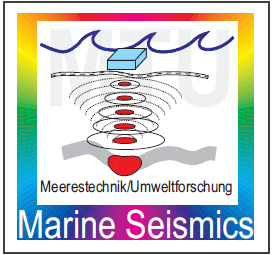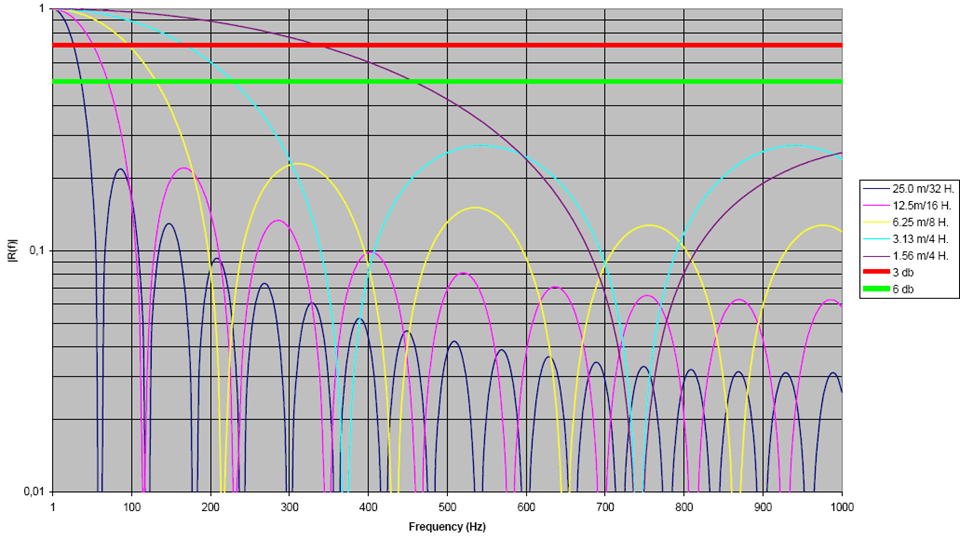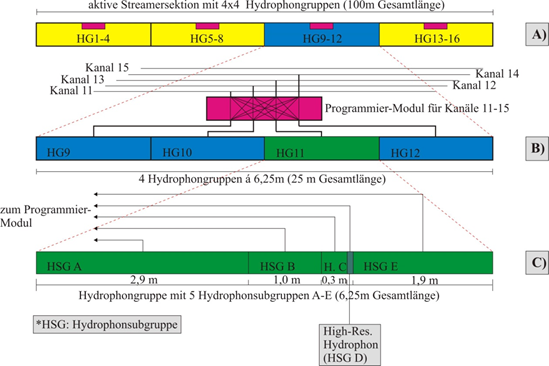Streamer Development
 Seismic streamer were used since the 1980's to acquire data, which allow deep imaging of the subsurface. Low frequency sources were used, first explosives and then large volume airgun. The most rewarding application was the search for oil and gas reservoirs, which needed several kilometers of signal penetration, and thus seismic frequencies had to be way below 100 Hz, even below 50 Hz in many cases.
Seismic streamer were used since the 1980's to acquire data, which allow deep imaging of the subsurface. Low frequency sources were used, first explosives and then large volume airgun. The most rewarding application was the search for oil and gas reservoirs, which needed several kilometers of signal penetration, and thus seismic frequencies had to be way below 100 Hz, even below 50 Hz in many cases.
For the shallow subsurface, higher frequencies were used, as being generated by boomers, sparkers or sediment echosounders. While the higher frequency allowed imaging of more details and strata. However, acquisition of higher frequencies was limited by the sample rate and data throughput of digital system, and mostly single channel system with very short streamer have been used.
Conventional streamerd, as used for hydrocarbon exploration, were designed to optimize signal-to-noise ratio by electrically combining several hydrophones into one group, and hydrophones were spread over several meters. In the 1990's typical conventional group lengths ranged from 6.25 to 25 meters. As becomes clear from the graphs to the right, the group length has a significant impact on the frequency-dependant sensitivity. A drop to 20% is reached for 25 m at 90 Hz, for 12.5 m at 170 Hz and for 6.25 m at 310 Hz, with a notch in between.
As a conseuqence, higher signal frequencies cannot be properly recorded.
1996 - Syntron 600 m Streamer
With the purchase of our first streamer in 1996, we decided to request a design, where these deficits could be principally overcome. For this purpose, socalled program plugs were implemented, where between 2 and 13 hydrophones could be combined into one group. Accordingly, group length could be varied between 0.5 and 6.25 meters. For a 0.5 m long group the notch is located above 1000 Hz.
2003 - Arstech Single Hydrophone 50 m Streamer
x spherical hydrophone
2014 - Teledyne Single Hydrophone 220 m Streamer
x cylindrical hydrophone
Equipment Characteristics

Frequency Response Function of a conventional streamer with different group length between 1.56 m and 25 m in 100 m water depth. For a typical 'high-resolution' streamer with 6.25 m group length, e.g., a not around 215 and 430 Hz would disturb a high-frequency airgun signal ranging from <100 to >500 Hz. Shorter groups are needed for shallow water seismics.
 The solution for a conventional streamer were programmable units, which allowed to design the length of each group between 0.3 m and 6.25 m. Also mixed group length were possible.
The solution for a conventional streamer were programmable units, which allowed to design the length of each group between 0.3 m and 6.25 m. Also mixed group length were possible.
